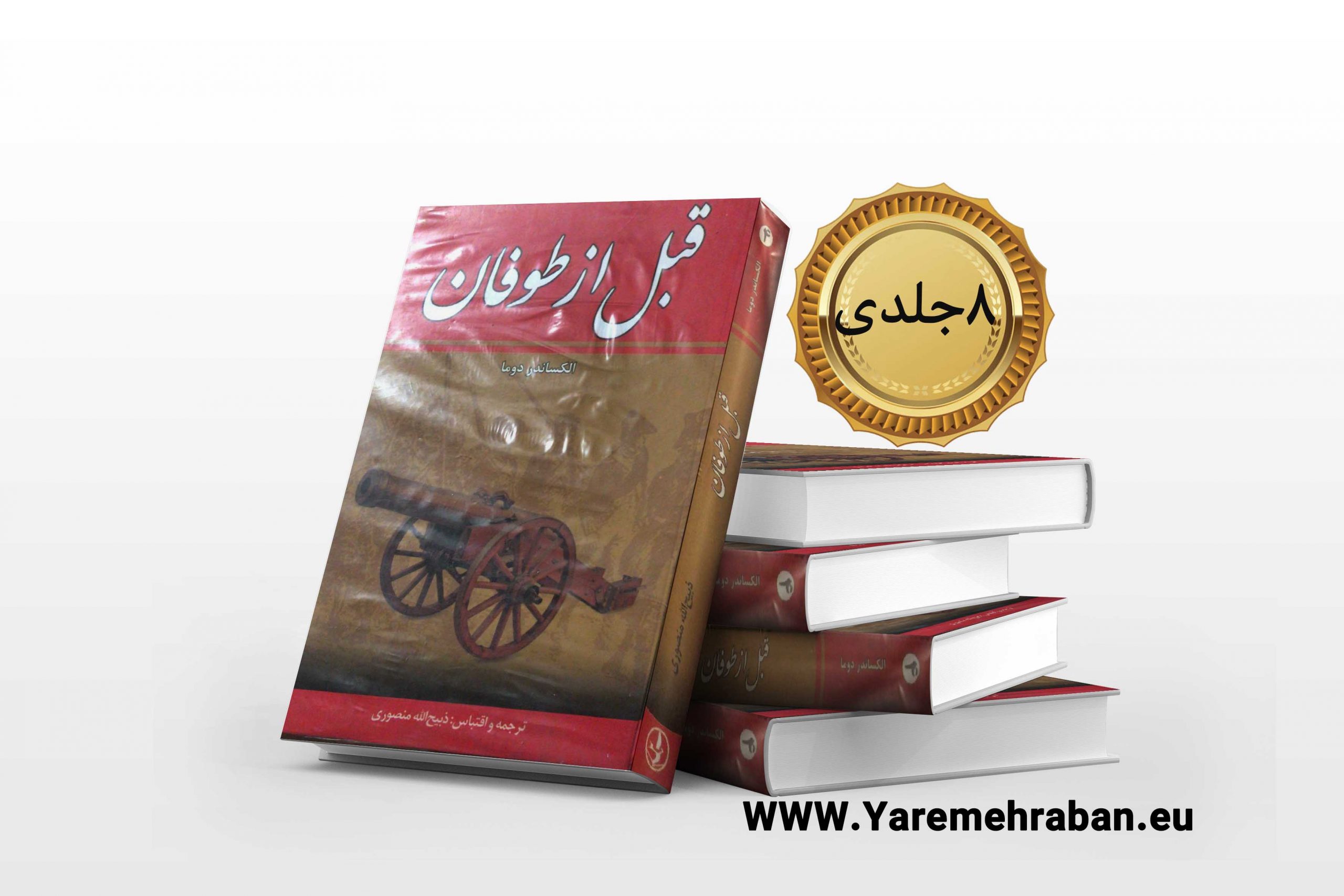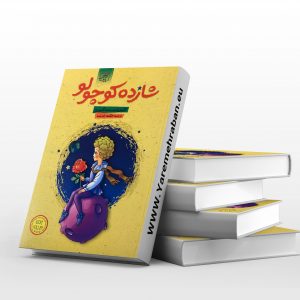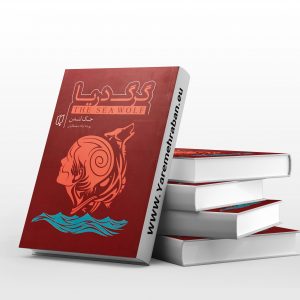Description
Quiter Before the Storm by Alexandre Dumas, the famous French author, is an interconnected collection of books by Queen Margot (1845), Mrs. Monsouro (1846) and The Forty-Five Guards (1847), written by Zabihullah Mansouri under the general title “Before Translated from “Storm” and their adventures to the reign of Charles IX, the assassination of St. Bartholomew, the conspiracies of the Queen Mother, the reign of Henry III, the adventures of the King Knights, especially the fascinating and readable story of the Debussy Knights and the Forty-Five Guards and finally Preparing the ground for the extinction of the Valva dynasty and the beginning of the reign of the Bourbons.
This collection belongs to a period in the history of Europe and France in which different political sects as well as different sects of the Christian religion fought against each other in the most severe way and were so fanatical that the human soul in that era fought against all of them. Political, religious, and private opposition were of no value, and it was as a result of these struggles and oppositions that several horrific massacres took place, including the assassination of St. Bartholomew at that time.
In addition to the massacres and how they were carried out, there is so much historical information in this collection that if the reader wanted to read a hundred thick historical books, he would not use as much information as he gets from this collection; Because everything here is the elite of historical events and the most prominent of them.
But all this historical, political, military information and conspiracies and conspiracies that are in this collection, because it is cast in the form of a charming novel, the reader never gets tired of reading them and the further he goes, the more he wants to read the sequel. And when we read this collection, we not only know the historical events of that era; Rather, the roots of some of the political and non-political differences of this period in which we live are revealed to us.
Book Summary Quiter Before the Storm
Time: 1572 AD
Location: France, Paris
On Monday, August 18, 1572, a grand celebration was held at the Royal Palace of the Louvre in Paris. That morning, Marguerite de Valois, sister of the King of France, Charles IX, was married to a young man named Henri de Bourbon, King of Navarre, in the church, and that night was celebrated at the Louvre.
Although there was a large royal celebration at the Louvre, people in the surrounding streets and squares were inflamed and anxious; Because those who were not among the guests and watched the celebration from a distance, felt that soon another celebration would take place that would have a different form and they would be invited to participate in that celebration …
Introduction Quiter Before the Storm:
Valwa family:
The Valois dynasty ruled France from the beginning of the Hundred Years’ War until the end of the 16th century. In these 3 centuries, they led the country to the Renaissance from the end of the Middle Ages and the era of feudal rule. Following in the footsteps of their predecessors (the Capti family), the Valois advanced the work of French unification and completed it successfully. The Valois dynasty itself was a branch of the Capitians, the rulers of France from the 10th to the 14th centuries.
The Valois, who came to power during the turmoil in France, were gradually divided into three branches: • The direct branch, which began with the reign of Philip VI and ruled France from 1328 to 1498.
The peak of Valva power is related to this period. • The Valvo-Orleans branch, of which only one member – Louis XII – came to power. The Valois-Angolan branch, which ruled from 1515 to 1574, eventually disintegrated after a period of religious war in France and was replaced by the Bourbon dynasty. The first valo rulers were involved in a hundred-year war with Britain. This war, which began at the beginning of the reign of the Valois (early 14th century AD), lasted until 1453. During this time, the Valva kings faced two major dangers.
First, the Kingdom of England, which had conquered a large part of France, and also the feudal lords, who sought to gain more influence by taking advantage of the decline of the Shah. This war finally ended with the victory of the French during the reign of Charles VII. From then on, the Valva kings tried to reduce the power of the feudal lords. Therefore, they seized tax authority and declared war and peace, and by increasing their military might, they marginalized the feudal lords. The outbreak of the so-called Italian Wars in the early 16th century marked the beginning of the Valois dynasty’s historic rivalry with the Habsburg dynasty.
An issue that later became a rivalry between France and Austria and occupied an important part of contemporary European history. The French Renaissance also took place during the reign of the two Valois kings – Henry II and François I. The outbreak of religious wars in France (1598-1562) brought relief to the Wallachian government. These wars took place between Catholics – who were in charge of the state apparatus – and Protestants. Finally, in 1574, Henry IV, the head of the Bourbon dynasty, emerged from the heart of the country’s religious wars. The Walwa family became extinct and was replaced by the Bourbons. The Bourbons ruled the country until the French Revolution.
Philip VI or Philippe Valois is the first French king of the Valois dynasty. His accession to the throne led to the claim of Edward III of England and the beginning of the Hundred Years’ War.
Jean II was nicknamed Jean Nick or Jean Good, King of France from 1350 to 1364. He was captured and imprisoned by the British on September 19, 1977 during the Battle of Poitiers in a series of conflicts of the Hundred Years’ War (1453-1337). He was forced to sign the Treaty of Brittany with them in 1981, which gave most of southwestern France to King Edward III of England.
(Quiter Before the Storm)
The first years and reaching the kingdom:
Jean was the son of Philip VI, King of France by his wife Jean Burgundy. She married Bonn Luxembourg at the age of 13 and in 1940 became commander of the Royal Army in Haino. He was then appointed as his father’s assistant in Britain in 1341 and in Languedoc in 1344. After the death of Philip VI on August 22, 1350, Jean II ascended the throne of France;
Yet he was an irrational king. Shortly after taking office, Jean began a period of celebrations, parties, and competitions that characterized his reign. In the same year he executed Raولl de Bruyne, his Count, and the French general, and gave his position to one of his minions, Charles de la Serda. He also hired hated and unreliable advisers at his court, appointing those to high government positions who, using their power, exacerbated the country’s economic crisis in the 1350s.
At that time, Britain and France were in a period of ceasefire during the Hundred Years’ War. Following this, he signed a new ceasefire agreement with the British on September 12 of that year; But he did not adhere to it again, and in August 1973 he supported the partisans of Charles Blois, the British claimant to the throne who had been imprisoned by King Edward III of England.
(Before the storm)
Conflict with Charles II, King Navarre:
Charles II, nicknamed the Bad Charles, was King Navarre and another staunch enemy of Jean, to whom Jean married his daughter in order to unite with her; But he did not pay anything to Charles about his daughter’s dowry. Relations between the two soured after Jean gave the lands that Charles Navaru wanted to the new French general, Charles de la Serda, and as a result, Charles Navarre retaliated by ordering the assassination of the new general. Despite Jean’s anger, the two kings formally made peace with each other in February 1975;
But Charles’s desire to ally with the King of England terrified Jean so much that he signed another peace treaty with Charles Navarre on September 10, 1976. However, on April 16, 1977, Jean II arrested and imprisoned Charles Navarre in Rouen.
(Quiter Before the Storm)
The Battle of Poitiers and the Captivity of John II:
In 1976, the war between Britain and France resumed, and Edward, Prince of Wales, later dubbed Edward the Black Prince, invaded southern France. Unable to stop British troops due to financial difficulties, Jean sought to finance himself by imposing a salt tax. Jean first defended Paris and Chartres, and finally confronted the Black Prince on September 19, 1977, near Poitiers.
The French army was severely defeated in what became known as the Battle of Poitiers, and Jean was captured by the British. He was transferred to London in April 1978 and housed in the Savoy Palace. There he signed heavy treaties in January 1979 and March 1980, which were not accepted by the French.
On the other hand, the humiliating defeat and arrest of Jean in the Battle of Poitiers and the economic and social crises had prompted the revolutionary branch of the French legislature to demand reforms by Duphen (later King Charles V), son and viceroy of John II at the time.
These demands eventually led to an uprising called the Peasant Uprising, which lasted from 1977 to 1979, during which time France was in danger of chaos. However, until 1980, Charles V was able to restore some of the public order in the country.
Signing of the British Treaty with Edward III:
Finally, the two treaties of Brittany and Calais were signed with England in May and October 1981, and bloodshed equal to 3 million gold coins were set for the liberation of John II. The treaty also ceded most of southwestern France to Britain, and since France was unable to pay for its king’s blood money at the time, it was agreed that hostages would remain in Britain until Jean’s blood money was paid in full.
Thus, Jan II was released on October 9, 1981, and was returned to France to provide his blood money. However, when one of Jean’s sons, who was being held hostage in England, escaped, he voluntarily returned to England, where he remained in captivity for the rest of his life.
(Before the storm)
Death:
John II died in London on April 8, 1985, and was succeeded by his son Charles V as King of France.
Charles V was nicknamed Charles Dana or Charles the Wise, King of France from 1985 until his death in 2001. During his time, France had entered the Hundred Years’ War with England, which lasted from 1337 to 1453. However, Charles V tactfully managed to reclaim the lands lost in the first phase of the war, thus thwarting the catastrophic British peace treaty signed between France and Britain in 1981.
The first years of life:
Charles V was born on January 21, 1980 in Wansen. His father was Jean II, King of France, and his mother was Bon Luxembourg. He was the first crown prince to receive the title of Dauphin in French history. No information is available on how Charles V taught; But his future activities as an art sponsor, theorist of the royal system, and founder of the Royal Library at the Louvre show his early interest in learning. In 1350, Charles married his cousin, Jean de Bourbon.
Defeat at the Battle of Poitiers and the beginning of Charles’s viceroy:
In 1337, the Hundred Years’ War between France and England began, which lasted until 1453, and completely affected Charles’s life. At the age of 16 he received the title of Duke of Normandy from his father, and at the age of 19, on September 19, 1977, together with his father and two younger brothers, he led the French army in the Battle of Poitiers. The British forces were also commanded by Edward, the Black Prince.
The French were severely defeated in this war, and John II was captured by the British in the midst of the battle, who wanted bloodshed to free him. Lacking the necessary financial resources and power at the time, Charles took over as his viceroy in France during his father’s captivity, which lasted until 1981.
During this time he faced internal discontent and was able to successfully suppress revolts such as the Jacques peasant uprising, the conspiracies of Charles II, King Navarre, and the popular movement led by Etienne Marcel, which had armed the Parisians against Duphen.
(Before the storm)
British Peace Treaty:
In May 1981, a British treaty was signed between England and France in a village of the same name near Chartres, and after the British agreed to a reduction in blood money, 3 million gold crowns were set aside for the liberation of John II.
At the same time, King Edward III of England claimed the throne of France, and John II was able to dispel his claim by handing over Poitou, Oni, Santonge, Angumova, Gen, Gasconi, Calais and some other areas to him. As a result of this treaty, peace was established between the two sides until 1990, when the conflict resumed.
The British then released Jean II on October 9, 1981, to pay for his blood money, and sent him to France. As France was unable to pay this amount at that time, it agreed to the presence of hostages in Britain until the blood money of the King of France was paid; But after one of the hostages, who was also the son of Jean II, escaped, Jean, who saw this as a disgrace, returned to England voluntarily and remained there for the rest of his life as a prisoner.
(Before the storm)
Kingdom:
John II died in London on April 8, 1985, and Charles V ascended the throne of France. The experiences he had gained during his viceroyship now prepared him for the first important task, which was to reverse the catastrophic consequences of his father and grandfather’s political incompetence. Although Charles V was not a good commander and was often ill, he did his best to rule.
He selected capable advisers and was able to recruit effective military commanders such as Bertrand de Gasclan to counter the growing British threat. Charles V reorganized the French army and created a new navy. He made changes to the tax system and united Flanders, Spain and Portugal. He also rebuilt the Louvre, built a huge library there, and completed the construction of Fort Wanson.
(Before the Storm) Continuation of the war with England and support for Clement VII:
In 1990, the war with Britain resumed, and Bertrand de Gasclan was able to retake all the territories that John II had ceded to the British – with the exception of Bordeaux – until 1373, when the British Treaty was effectively annulled in 1375. In 1378, Charles V learned of the plots of Charles II, King Navarre, and confiscated all his lands in France except Cherbourg. In December of that year, Charles made his last attempt to seize power from John IV, Duke of Britain, to no avail. Charles’s last political activities focused on the rivalry between the two newly elected popes, and his support for Clement VII marked the beginning of divisions within the Roman Catholic Church, which lasted from 1378 to 1417.
Death:
Charles V died on September 16, 2001 in Nougat-sur-Marne, and after him his 11-year-old son, Charles VI, ascended the throne of France …
1- Introducing the book Quiter Before the Storm on YouTube
2- Introducing the book Quiter Before the Storm in Aparat














Reviews
There are no reviews yet.